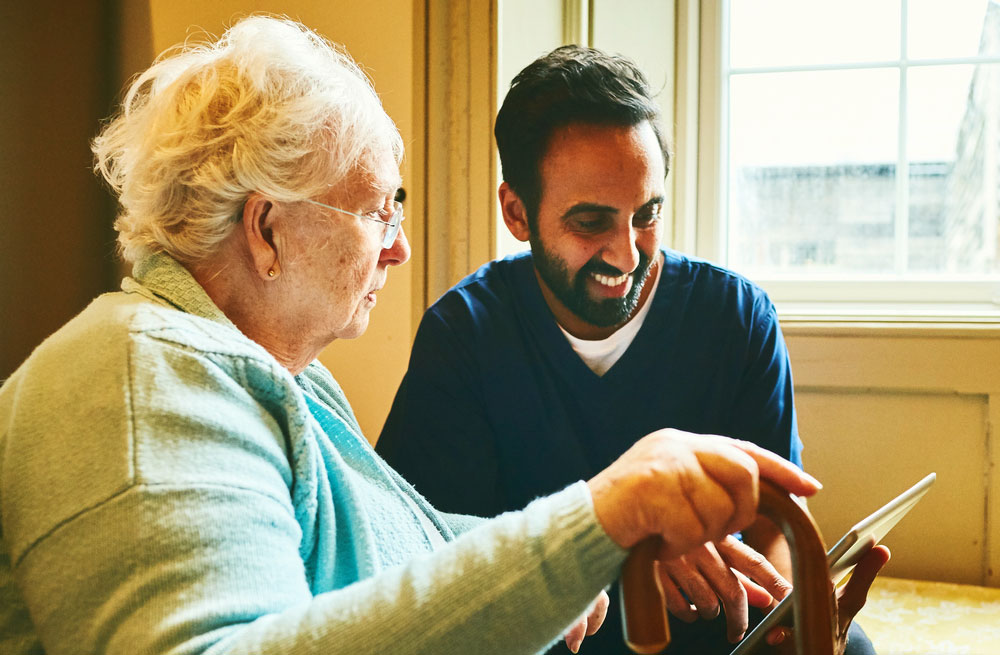Web Accessibility 101: A Newbie's Guide To Digital Inclusivity

One of the project requirements that is often needed, but customarily forgotten, is web accessibility. To help you get a better understanding of what it is, why it’s essential, and if it might be something you need to consider for your website, we have put together a quick overview - a pocket guide - to help you get started.
What is web accessibility?
In its purest form, web accessibility is the practice of ensuring that people with disabilities can easily interact with and have equal access to your website’s content and functionality. Some people call this “inclusive design” or “accessible design”.
What kind of disabilities does web accessibility cover?
When you think about a website, you probably take for granted all of the things you use to “experience” it. You see things on the site in color, with contrast, that are easy to read. You hear things when you watch videos or listen to podcasts and recordings. You use your mouse to hover over, interact, and click through things. You use your fingers to tap and swipe on mobile phones and tablets. All of these methods for experiencing a website are for users who can see, hear and are without mobility challenges.
Web accessibility helps users who have one, or a combination of, the following:
- Full blindness
- Color blindness
- Low vision
- Speech disabilities
- Deafness
- Limited hearing
- No use of hands
- Limited movement
- Photosensitivity
- Learning disabilities (e.g. ADHD, dyslexia, and autism)
To account for all these user needs, web accessibility requires an intentional approach to planning, designing, developing, and testing web sites and results in an overall improved and inclusive experience for all users.
But wait, there's more...
Though web accessibility was intended for the list above, the REALLY big thing to understand and consider is that there is a wide spectrum of users that an accessible and inclusive approach can help benefit. For example:
- building an accessible website for blind people will also help people who are trying to view your site outside when there may be a glare on their screen.
- building an accessible experience for deaf people will also help people who are trying to consume your content in a loud and noisy environment.
- building a website that can be navigated by someone with limited hand mobility will also help people who have temporarily broken/injured arms or simply have their hands full, like carrying groceries or a baby (hopefully not both at the same time).
The spectrum of benefits is incredible and extends well beyond the original intent.
How big of an audience could web accessibility help?
In a word, “BIG”! According to the WorldBank, "One billion people, or 15% of the world’s population, experience some form of disability,” and they go on to report that "One-fifth of the estimated global total, or between 110 million and 190 million people, experience significant disabilities”. That’s a lot!
In addition to this, as each generation of Internet-enabled users grow older, this number will increase exponentially.
When did web accessibility start?
It surprises some people that web accessibility has been a thing for over 20 years. in 1999, the World Wide Web Consortium (W3C) created the Web Accessibility Initiative (WAI) which was the genesis for the first version of the Web Content Accessibility Guidelines - now know as WCAG 1.0.
Almost a decade later in 2008, WCAG 2.0 was released as a formal recommendation and started to become widely adopted by governments to be the definitive guideline of how to create accessible web sites.
Most recently, in June 2018, WCAG 2.1 was released to extend the 2008 guidelines to include recommendations for newer technology like mobile phones and tablets.
How do I know if my site is accessible or not?
Web Accessibility requires an intentional approach to planning, designing, developing and testing websites. If you have recently completed a website and web accessibility is new to you, the chances are that web accessibility most likely was not included.
To double check, though, you can use Google’s new website performance tool to gauge your site's level of accessibility conformance. Built off of Google LightHouse, it checks performance, accessibility, best practices, and SEO on a scale of 1-100. The good news is that it's free and very informative and can be used to get a quick sense of how well your site is performing across all of those different categories.
How do I know if I should include web accessibility?
Answer these simple questions:
- Does my business promote a culture of inclusivity?
- Do I want to grow the audience who can view and use my website?
- Do I want to future proof my website?
- Do I want to do the right thing and make a better web?
- Do I want to safeguard my company from potential legal issues?
If you've answered "yes" to any of these, web accessibility is something you should have on your radar.
If you’re looking to open your business up to all users, a baseline conformance should be a requirement. The lowest level of accessibility conformance is known as WCAG Level A, with Levels AA and AAA being more comprehensive. To ensure conformance, we highly recommend finding a trusted partner who has experience in building accessible sites and can set your team up with best practices for keeping your website accessible as you manage and enhance your web site.
How do I justify the investment in web accessibility?
Great question, putting your heart aside, it is perfectly valid to understand all of the ways accessibility can help your business. At the end of the day, it will require an investment of time and money and justifying both to decision makers (and the money people) on your team is important. Though we plan on covering all of these in more detail in future articles, here is a quick punch list of reasons.
- Being an innovator - including accessibility in your projects and culture leads to innovation and can help in many unexpected ways. A lot of the tools you use daily are the result of building more inclusive products and services. As a quick example, have you ever asked Siri for directions or Alexa to play a song for you?
- Strengthening your brand presence - building an inclusive digital experience shows that you genuinely do support diversity and inclusivity it can be a very positive thing for your brand.
- Improving your customer experience - welcoming and including more users in the overall experience on the site promotes better usage, goodwill, and could even reduce the number of calls to your support line.
- Increasing your customer base - how much could your business grow if you knew that everyone, yes everyone, could use your site successfully and have a positive experience?
- Avoiding legal exposure - more and more lawsuits are filed each year against organizations who do not provide an inclusive experience for their users. Could you be next? What would that cost in time and money?
For more immediately details on the benefits above, check out our friend Sharron Rush’s great article on the W3C’s site - it's a comprehensive argument with fantastic examples to help with internal justification to decision makers. We'll also be writing more about this topic in upcoming accessibility articles.
I'm in! What's my first step?
The best first step is always going to be education - doing more research, getting more data, and better understanding both the problem and the value it can bring to your organization. Then, and only then, can you have a more empathic view towards the spectrum of users who can be served by implementing accessible practices. If you want to learn more, there are tons of books and articles online, formal training, and ongoing education at your fingertips online.
Alternatively, if you're all in but need a trusted guide to help you navigate the accessibility world, we are also happy to help. We can help guide you on your next project, retrofit things with an existing website, and/or come in and discuss the benefits of accessibility with your organization, and increase the organization's competence around, and inherent value of, truly investing in an inclusive experience.
Latest Articles

Lessons from the Trenches: Debunking The Myths About WordPress
WordPress has attracted much attention over the years as a popular and influential content management system. Unfortunately, with that attention comes a lot of misinformation and myths. Today, we're going to debunk the top 10 WordPress myths.
Continue reading
The 4 Most Common Drivers of a Website Redesign
Feeling like it might be time for a new site? This article will help your business identify why now might be a good time and what options might be a good fit.
Continue reading